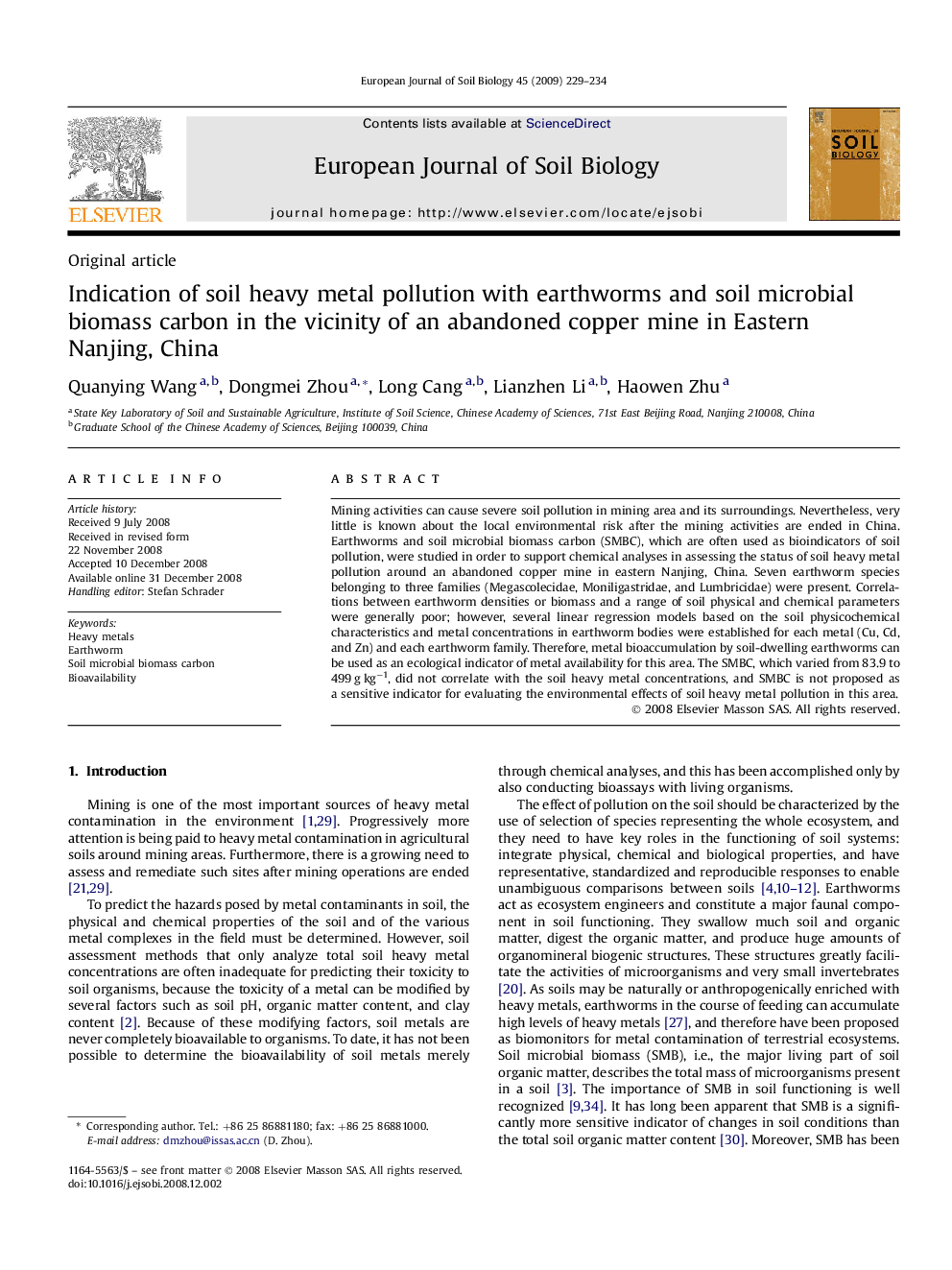| Article ID | Journal | Published Year | Pages | File Type |
|---|---|---|---|---|
| 4392273 | European Journal of Soil Biology | 2009 | 6 Pages |
Mining activities can cause severe soil pollution in mining area and its surroundings. Nevertheless, very little is known about the local environmental risk after the mining activities are ended in China. Earthworms and soil microbial biomass carbon (SMBC), which are often used as bioindicators of soil pollution, were studied in order to support chemical analyses in assessing the status of soil heavy metal pollution around an abandoned copper mine in eastern Nanjing, China. Seven earthworm species belonging to three families (Megascolecidae, Moniligastridae, and Lumbricidae) were present. Correlations between earthworm densities or biomass and a range of soil physical and chemical parameters were generally poor; however, several linear regression models based on the soil physicochemical characteristics and metal concentrations in earthworm bodies were established for each metal (Cu, Cd, and Zn) and each earthworm family. Therefore, metal bioaccumulation by soil-dwelling earthworms can be used as an ecological indicator of metal availability for this area. The SMBC, which varied from 83.9 to 499 g kg−1, did not correlate with the soil heavy metal concentrations, and SMBC is not proposed as a sensitive indicator for evaluating the environmental effects of soil heavy metal pollution in this area.
